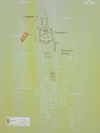
Site Map of La Venta (559k)
La Venta holds the remnants of the Olmec civilization, one of the many Ancient Civilizations that I visited during my travels.
From the La Venta entry in Wikipedia:
La Venta is a pre-Columbian archaeological site of the Olmec civilization located in the present-day Mexican state of Tabasco. Some of the artifacts have been moved to the museum "Parque - Museo de La Venta", which is in nearby Villahermosa, the capital of Tabasco.
The Olmec were one of the first civilizations to develop in the Americas. Chronologically, the history of the Olmecs can be divided into the Early Formative (1800-900 BCE), Middle Formative (900-400 BCE) and Late Formative (400 BCE-200 CE). The Olmecs are known as the "mother culture" of Mesoamerica, meaning that the Olmec civilization was the first culture that spread and influenced Mesoamerica. The spread of Olmec culture eventually became the cultural features found throughout all Mesoamerican societies.
Rising from the sedentary agriculturalists of the Gulf Lowlands as early as 1600 BCE in the Early Formative period, the Olmecs held sway in the Olmec heartland, an area on the southern Gulf of México coastal plain, in Veracruz and Tabasco. Prior to the site of La Venta, the first Olmec site of San Lorenzo dominated the modern day state of Veracruz (1200-900 BCE).
Certainly the most famous of the La Venta monumental artifacts are the four colossal heads. Seventeen colossal heads have been unearthed in the Olmec area, four of them at La Venta, officially named Monuments 1 through 4.
Three of the heads - Monuments 2, 3, & 4 - were found roughly 150 m (490 ft) north of Complex A, which is itself just north of the Great Pyramid, Complex C-1. These heads were in a slightly irregular row, facing north. The other colossal head - Monument 1 - was found in Complex C, a few dozen meters south of the Great Pyramid C-1.
The La Venta heads are thought to have been carved by 700 BCE, but possibly as early as 850 BCE, while the San Lorenzo heads are credited to an earlier period. The colossal heads can measure up to 2.84 m (9.32 ft) in height and weigh several tons. The sheer size of the stones causes a great deal of speculation on how the Olmec were able to move them. The major basalt quarry for the colossal heads at La Venta was found at Cerro Cintepec in the Tuxtla Mountains, over 80 km (50 miles) away.
Each of the heads wears headgear reminiscent of 1920s-style American football helmets, although each is unique in its decoration. The consensus is that the heads likely represent mighty Olmec rulers.
There are a total of 17 colossal heads, four from La Venta, 10 from San Lorenzo, two from Tres Zapotes, and one from La Cobata
From the Olmec colossal heads in Wikipedia:
Olmec colossal heads vary in height from 1.47 - 3.4 m (4.82 - 11.2 ft) and weigh between 6 and 50 tons. All of the Olmec colossal heads depict mature men with flat noses and fleshy cheeks; the eyes tend to be slightly crossed. The general physical characteristics of the heads are of a type that is still common among people in the Olmec region in modern times. The backs of the heads are often flat, as if the monuments were originally placed against a wall. All examples of Olmec colossal heads wear distinctive headdresses that probably represent cloth or animal hide originals. Some examples have a tied knot at the back of the head, and some are decorated with feathers. A head from La Venta is decorated with the head of a bird. There are similarities between the headdresses on some of the heads that has led to speculation that specific headdresses may represent different dynasties, or perhaps identify specific rulers. Most of the heads wear large ear spools inserted into the ear lobes.
The colossal heads cannot be precisely dated. However, the San Lorenzo heads were buried by 900 BCE, indicating that their period of manufacture and use was earlier still. The heads from Tres Zapotes had been moved from their original context before they were investigated by archaeologists and the heads from La Venta were found partially exposed on the modern ground surface. The period of production of the colossal heads is therefore unknown, as is whether it spanned a century or a millennium. Estimates of the time span during which colossal heads were produced vary from 50 to 200 years. The San Lorenzo heads are believed to be the oldest, and are the most skillfully executed. All of the stone heads have been assigned to the Preclassic period of Mesoamerican chronology, generally to the Early Preclassic (1500-1000 BCE), although the two Tres Zapotes heads and the La Cobata Head are attributed to the Middle Preclassic (1000-400 BCE)
All pictures are © Dr. Günther Eichhorn, unless otherwise noted.
























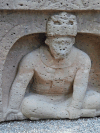






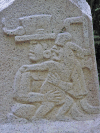

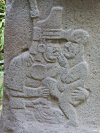







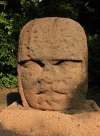



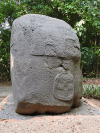
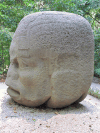








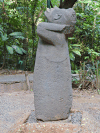







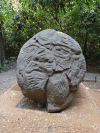


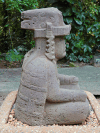
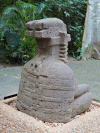








This page contains 77 pictures
Page last updated on Sat Mar 6 16:13:31 2021 (Mountain Standard Time)
La Venta on gei.guenther-eichhorn.com